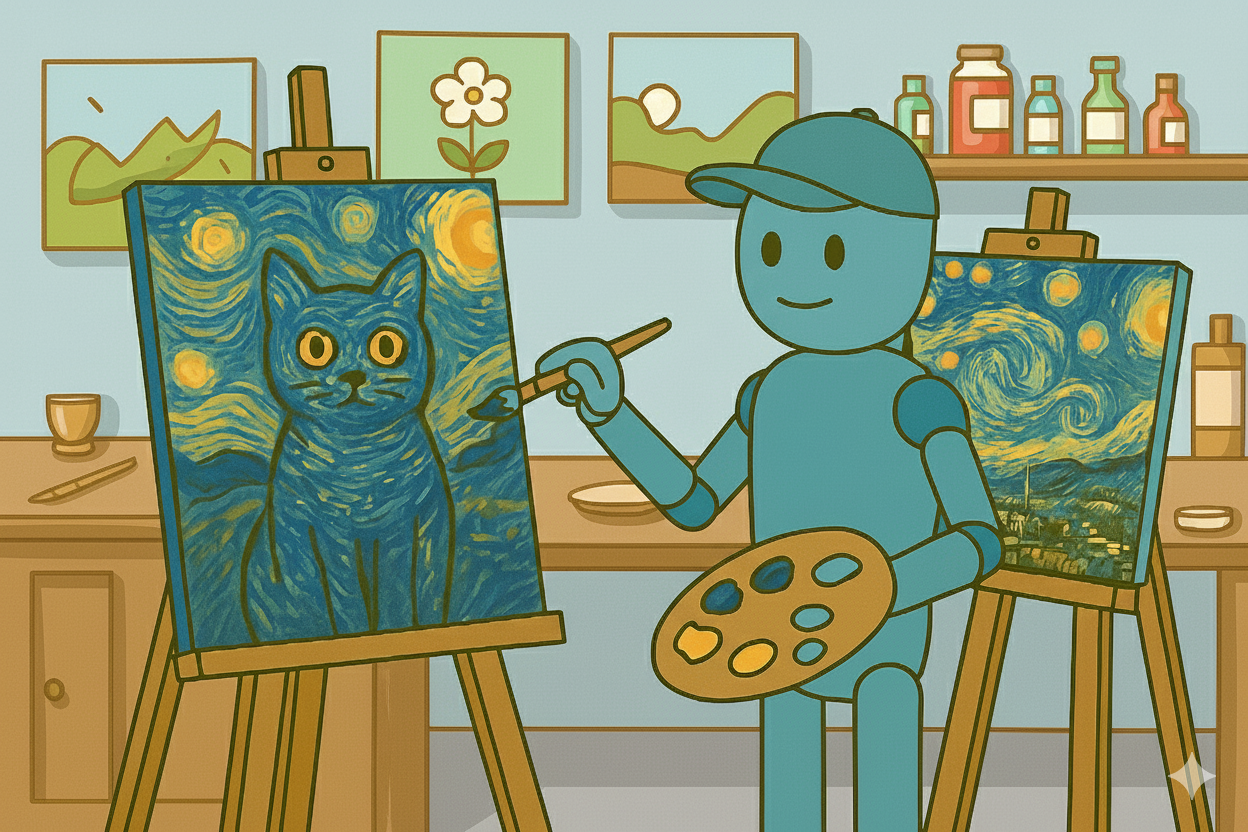Introduction to Neural Style Transfer
Deep dive into AI art generation and deep learning computer vision with neural style transfer—the breakthrough that launched the creative AI revolution. Transform any image into stunning artistic masterpieces using convolutional neural networks using Gatys' foundational VGG-based optimization to cutting-edge real-time implementations. Learn machine learning fundamentals, PyTorch coding, and advanced image processing techniques that power billion-dollar AI tools like Instagram filters, Prisma, and professional design software.

Language
- English
Topic
- Artificial Intelligence
Skills You Will Learn
- Artificial Intelligence, Computer Vision, Image Processing, PyTorch
Offered By
- IBMSkillsNetwork
Estimated Effort
- 1 hour
Platform
- SkillsNetwork
Last Update
- November 4, 2025
What You'll Learn
- Implement the complete Gatys neural style transfer architecture: Build the VGG-based optimization method from the ground up, understanding how convolutional neural networks learn artistic representations and the mathematical foundations that enabled AI to create art for the first time.
- Master foundational computer vision and deep learning techniques: Learn perceptual loss functions, feature extraction, Gram matrix calculations, and content-style separation while gaining hands-on experience with PyTorch implementations that form the theoretical backbone of all creative AI.
- Understand the mathematical foundations behind the creative AI revolution: Dive deep into loss function design, optimization landscapes, and neural network interpretability that made Gatys' method the launching point for the entire field of neural artistic style transfer.
Who Should Enroll
- Computer vision engineers and AI researchers wanting to master the foundational technique behind creative AI, understanding both the theoretical principles and practical implementation of the seminal neural style transfer method that started it all.
- Machine learning practitioners working with generative models who need deep expertise in convolutional architectures, optimization methods, and the core algorithmic innovations that transformed academic computer vision research into artistic applications.
- Creative technologists and digital artists seeking to understand the technical foundations behind AI art tools, enabling them to grasp the fundamental principles that govern how neural networks can learn and transfer artistic style.
Why Enroll
What You'll Need

Language
- English
Topic
- Artificial Intelligence
Skills You Will Learn
- Artificial Intelligence, Computer Vision, Image Processing, PyTorch
Offered By
- IBMSkillsNetwork
Estimated Effort
- 1 hour
Platform
- SkillsNetwork
Last Update
- November 4, 2025
Instructors
Tenzin Migmar
Data Scientist
Hi, I'm Tenzin. I'm a data scientist intern at IBM interested in applying machine learning to solve difficult problems. Prior to joining IBM, I worked as a research assistant on projects exploring perspectivism and personalization within large language models. In my free time, I enjoy recreational programming and learning to cook new recipes.
Read moreContributors
Jianping Ye
Data Scientist Intern at IBM
I'm Jianping Ye, currently a Data Scientist Intern at IBM and a PhD candidate at the University of Maryland. I specialize in designing AI solutions that bridge the gap between research and real-world application. With hands-on experience in developing and deploying machine learning models, I also enjoy mentoring and teaching others to unlock the full potential of AI in their work.
Read more